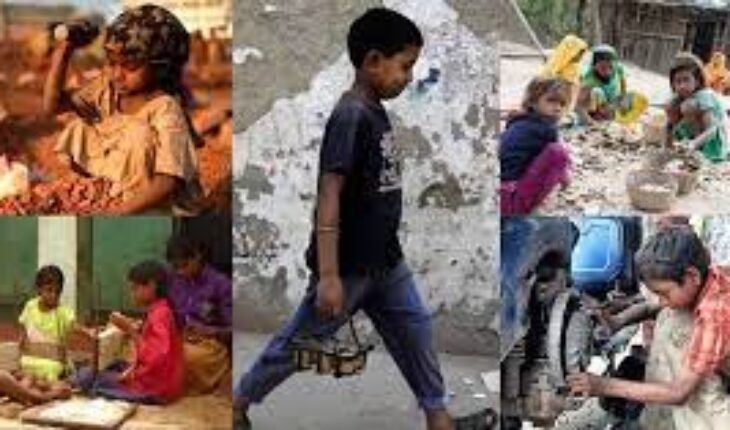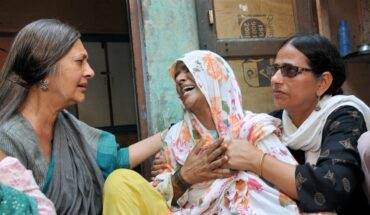
India is among the countries having a significant number of child labourers. “Substantial variation in child labour estimates exists across the South Asian countries. In absolute terms, child labour in the 5-17 age group is highest in India (5.8 million), followed by Bangladesh (5 million), Pakistan (3.4 million) and Nepal (2 million),” according to the ILO report titled ‘Child Labour in South Asia’.Child labour typically means the employment of children in any manual work with or without payment. It is a deep-rooted social evil in India. As per the 2011 Census, in the age group 5-14 years, 10.1 million of 259.6 million constituted working children.The UN general assembly in 2015 adopted the Sustainable Development Goals (SDGs), one of which was to eliminate all forms of Child labour by 2025. India as a country has accepted this goal. The present situation of child labour in India is distressing. A research report by the Kailash Satyarthi Children’s Foundation has estimated that in 2021, the total child labour population in India is 81.2 lakh. This figure is expected to decline further to 74.3 lakh by 2025. Even though there was a decline in the number of working children to 3.9% in 2011 from 5% in 2001, the decline rate is grossly insufficient to meet target 8.7 of the UN Sustainable Development Goals (SDGs), which is to end child labour in all forms by 2025. The top three states which will together have half of the total child labourers by 2025 in the country will be Uttar Pradesh, Bihar and Maharashtra, it said. The pandemic has compounded the existing situation of child labour, thus making it difficult to achieve the global goal of ending child labour. According to an International Labour Organisation (ILO) report, the Covid-19 crisis threatens to reverse the progress made globally in eliminating child labour. There would be a rise in child labour—for the first time in the last two decades—because of millions of children are being pushed into it. Children in developing economies and populous countries are more vulnerable. During the pandemic years, the Bachpan Bachao Andolan (BBA)—a co-organisation of KSCF founded by Nobel Peace Laureate Kailash Satyarthi in 1980 to liberate and rehabilitate exploited children has rescued more than 10,000 child labourers across 16 States. According to the National Crimes Records Bureau (NCRB) 2020, the cases registered under the Child Labour (Prohibition & Regulation) Act in 2018, 2019 and 2020 were 464, 772 and 476, respectively. The top five states recording the maximum number of offences were Telangana (147 cases), Karnataka (54 cases), West Bengal (41 cases), Assam (40 cases) and Andhra Pradesh (37 cases). To formulate a plan for eliminating child labour, urgent measures are required. A holistic approach is needed—from legislative measures to a viable rehabilitation strategy, from poverty alleviation and socio-economic development to awareness generation and education. Alongside this, the rescue of child labourers has to become a priority for the country’s law enforcement agencies. Also, the measures initiated by the government require effective implementation. In 2016, the Child Labour (Prohibition & Regulation) Act, 2016, was amended, thereby making the offence of employing children cognisable and providing stricter punishment for such offences. It also framed the Child Labour (Prohibition and Regulation) Amendment Central Rules along with the model state action plan enumerating action points to be taken by State Governments. The union government also implemented the National Child Labour Project (NCLP) scheme to rehabilitate child labour, which has been included under Samagara Shiksha Abhiyan (SSA). Eliminating child labour by 2025 remains a priority task.
In India, inequality, lack of educational opportunities, slow demographic transition, lack of decent work and social protection, traditions and cultural expectations all contribute to the persistence of child labour. Child labour and exploitation doesn’t only pose a threat to national economies, but also present negative short and long-term consequences for children, such as denial of education and weakened physical and mental health. In view of the current scenario, few policy prescriptions are suggested. First, given the critical role that mothers’ education plays in mitigating child labour, schemes to promote education among females that are already in place need to be improved upon to include more beneficiaries. Second, the better quality of government schools, particularly in rural areas, needs to be ensured. Although policies such as midday meals and Sarva Shiksha Abhiyan have come a long way, efforts must be directed towards imparting quality education such that the parents find it beneficial to send their children to school. Third, the positive impact of reservation of seats in education and public employment is probably the reason behind the lower incidence of child labour in urban areas with a higher SC/ST children population. Thus, steps need to be taken to ensure that people belonging to the backward castes in rural areas are also made aware of their rights. Lastly, policies must be focused not only on increasing per capita income but should also guarantee its equitable distribution, especially in urban areas. There should be introspection, on the one hand, and strategic planning, on the other, so that children receive their inalienable rights—a happy childhood, education and justice
Dr.Harvinder Kaur, Associate Professor in Economics, Ambala, views are personal






